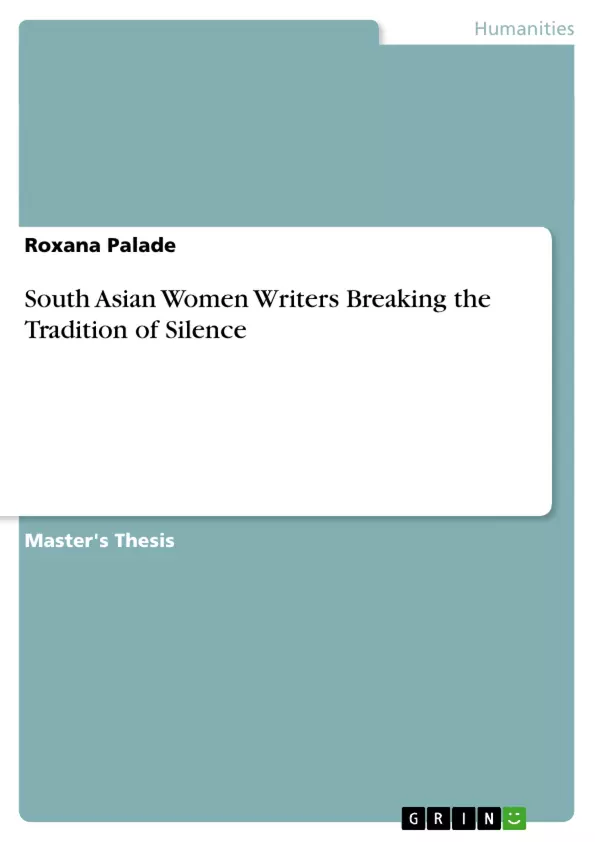The present paper aims at approaching the exceptional cases of five South Asian women writers who grapple in their novels with different manifestations of male violence against women. What will be examined is their aesthetic perspective and representation of the given topic, as well as their significant contribution to the effort of breaking the silence on gender-based violence by transforming it into a speakable subject.
The present paper will be limited to analyse its aesthetic engagements by focusing on the following fictional works: Manju Kapur (India) – Home, Taslima Nasrin (Bangladesh) – My Bengali Girlhood, Mukhtar Mai (Pakistan)- In the Name of Honor, Tehmina Durrani (Pakistan) - My Feudal Lord, and Anita Nair (India) - Ladies Coupé. The visible interest in the South Asian literary writing is legitimized by the writers’ argument that the social systems referred to in the texts display a visible predisposition to protect the male abusers and silence the victims. In an attempt to explore their indictments, it is relevant to introduce theories and empirical results from the area of sociology and psychology, as well as pertinent statements of literary critics, Indian and Pakistani writers and journalists. The present paper will contextualize and thematize the issue of gender-based violence and the silence camouflaging it on the basis of the following structural outline: the next chapter will provide a brief view on the phenomenon of violence, then it will deal with one of its particular areas, namely violence against women. Further, the paper will provide the reader an introductive outlook on gender-based violence, its various implications and the objectives of the three sub-chapters on child sexual abuse, rape, and intimate partner violence.
The third chapter will be dedicated to the question of silence on male violence against women; the purpose of this chapter will be to investigate the causes of this particular type of silence, its mechanisms and the factors that contribute to its propagation. Also, in focusing on the possibilities and consequences of disrupting the silence on male violence, the paper will seek to discover what are the costs and chances of success of such an non-conformist endeavour.
Finally, the last section of the thesis will be concerned with the review of the main ideas developed along the two main chapters in order to verify the substantially and relevance of the arguments.
Inhaltsverzeichnis (Table of Contents)
- Introduction
- Violence
- Violence against women
- (Female) Child sexual abuse
- Rape
- Intimate partner violence
- Consequences of violence against women
- Violence against women
- Silence
- Silence a cultural construction?
- Agents of silence
- Speaking and its consequences
Zielsetzung und Themenschwerpunkte (Objectives and Key Themes)
This paper aims to analyze how five South Asian women writers address various forms of male violence against women in their novels. The paper will examine their aesthetic perspective and representation of this issue, and their contribution to breaking the silence on gender-based violence. The main objectives of the paper include:- To explore how literary texts can mirror social gender-biased reality.
- To examine how these texts approach and illustrate the phenomenon of gender-based violence and its implications.
- To analyze the impact of silence on male violence against women and investigate the causes, mechanisms, and factors that contribute to its propagation.
- To explore the possibilities and consequences of disrupting the silence on male violence.
- To discover the costs and chances of success of such an endeavor.
Zusammenfassung der Kapitel (Chapter Summaries)
The first chapter provides an overview of the phenomenon of violence, with a focus on violence against women. It explores the various implications and meanings of violence, drawing on insights from different academic disciplines. The chapter also introduces the concept of abuse and its relationship to violence. The second chapter delves into the issue of silence on male violence against women. It investigates the causes, mechanisms, and agents of this silence, exploring how societal norms and cultural constructions contribute to the silencing of victims. The chapter also examines the potential consequences of breaking this silence. The third chapter is dedicated to the literary representations of violence and silence. It analyzes the works of five South Asian women writers, highlighting their aesthetic perspectives and their contributions to breaking the tradition of silence surrounding gender-based violence.Schlüsselwörter (Keywords)
The main keywords and focus topics of the paper include: gender-based violence, silence, South Asian women writers, literary representation, social reality, cultural constructions, and the consequences of speaking out against violence. The paper explores these concepts in the context of South Asian societies and seeks to shed light on the complex interplay between power, gender, and silence.- Quote paper
- Roxana Palade (Author), 2009, South Asian Women Writers Breaking the Tradition of Silence, Munich, GRIN Verlag, https://www.grin.com/document/206116



